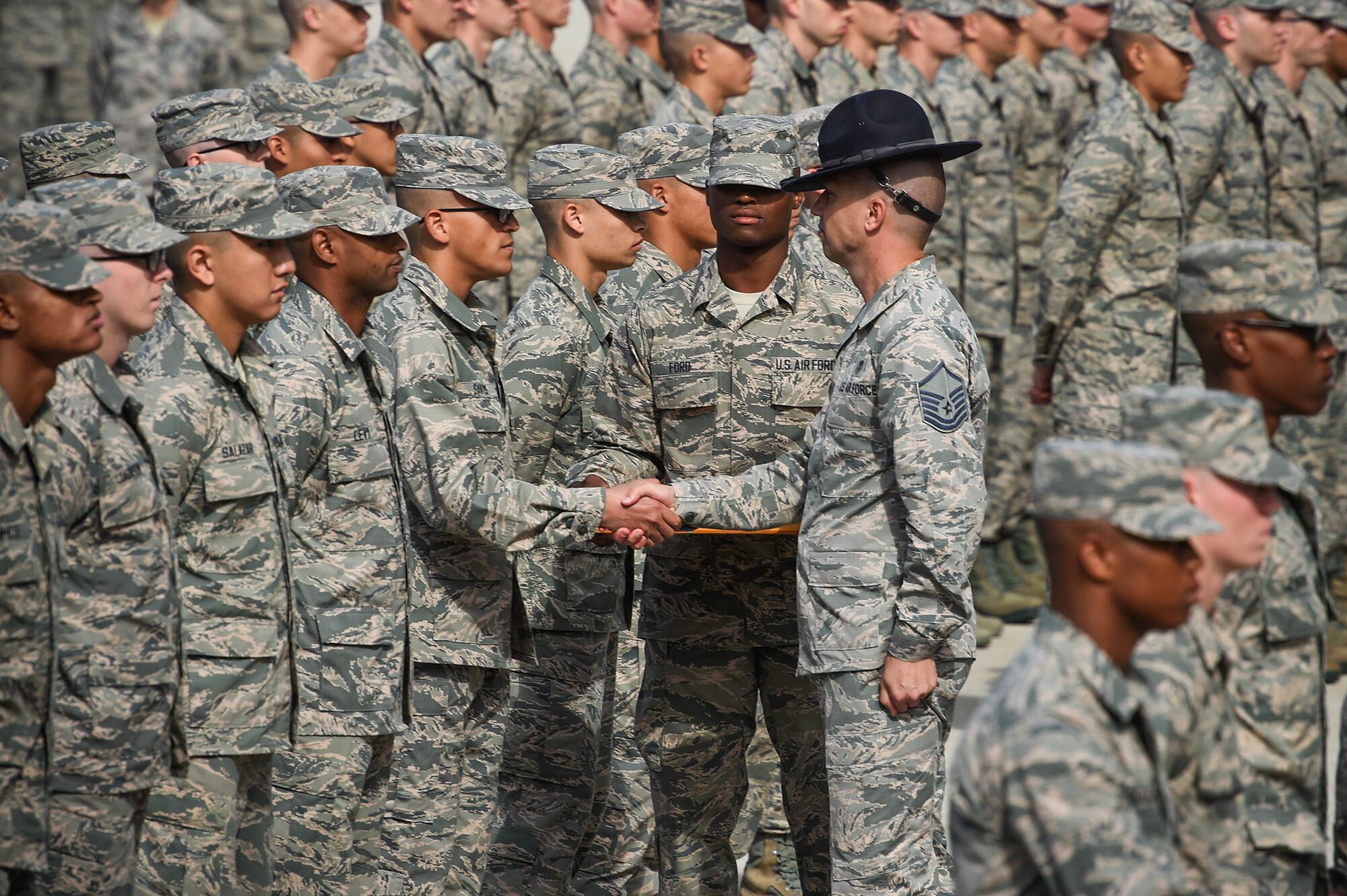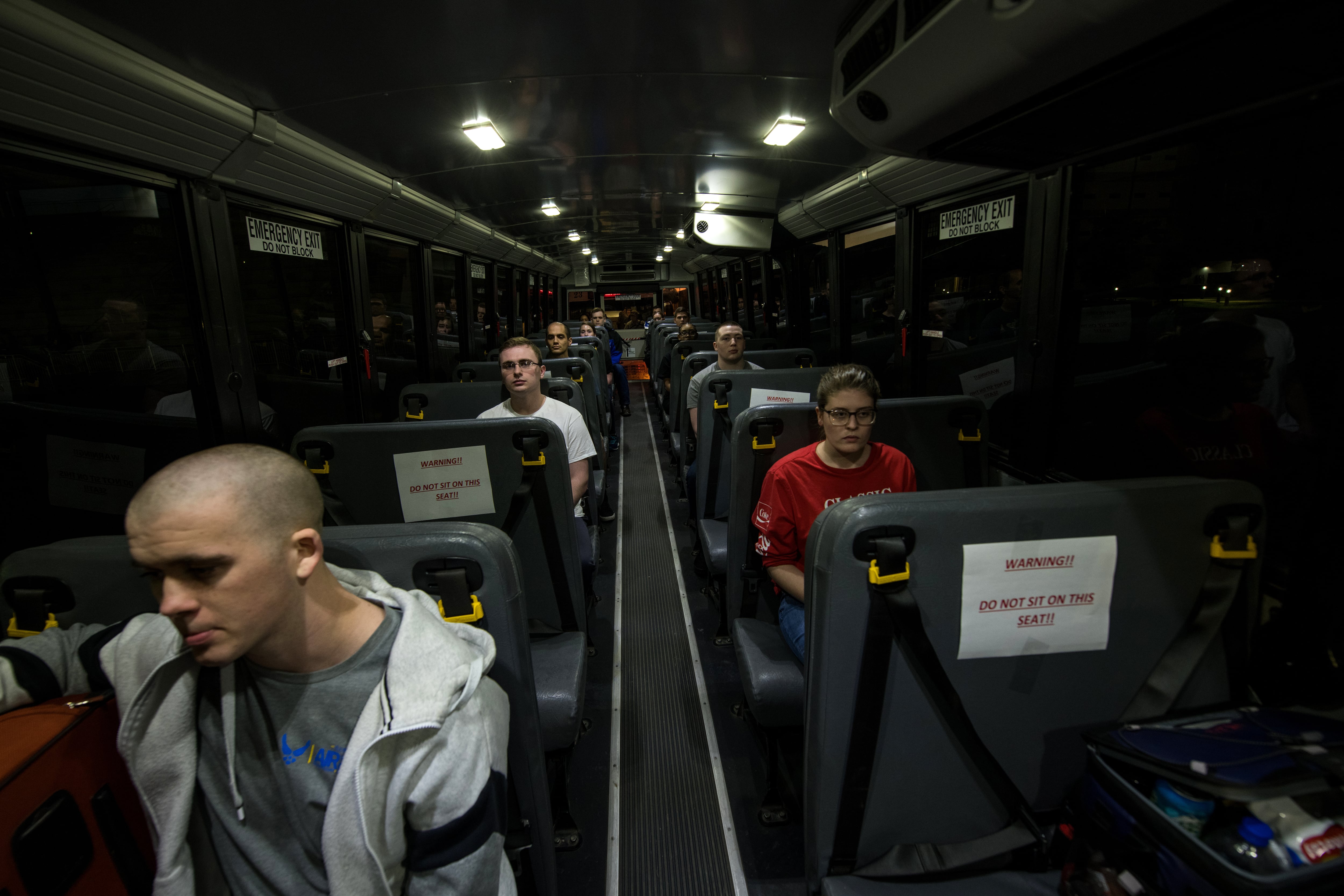The Air Force will continue shipping recruits to basic training even after four of them were deemed positive for the novel coronavirus at Joint Base Lackland-San Antonio, Texas, in less than a week.
Service officials are preparing to send some recruits to a new location — Keesler Air Force Base in Mississippi — under a pilot program to open a temporary training site to bring more space between recruits. Officials say they will mitigate the virus’ spread at both sites by breaking recruits into 40-person restricted movement cohorts during their first two weeks of basic training, applying social distancing, monitoring symptoms of all recruits and employees entering or leaving bases, and deep cleaning between training rotations.
All four recruits who tested positive for the coronavirus are now in isolation, but they’re experiencing “very low symptoms,” according to Maj. Gen. John J. DeGoes, a medical doctor and commander of the 59th Medical Wing on Joint Base San Antonio-Lackland
The cases came from three separate training cohorts, DeGoes said during a conference call with the media on Monday. Case number four was the result of exposure to case number one.
“The subsequent cases — two of them — were early enough in their time on Lackland that they almost certainly got the infection from where they came from," DeGoes said.
There is a screening process in place that attempts to prevent any ill recruits from leaving their hometown and arriving at basic training in the first place.
“We still believe, through the best science, that symptomatic patients are the ones who are more likely to spread the disease,” said DeGoes. “There is very little known from the CDC about people who have the disease and have no symptoms, whether or not they can actively spread the disease.”
RELATED

People are thought to be most contagious when they are the sickest, according to the Center for Disease Control. Officials at the CDC also note that some spread might be possible before people show symptoms, but this is not thought to be the main way the virus spreads.
On their way to basic training, recruits are transported by commercial aircraft and charter buses. Of the two basic training classes that have started during the outbreak, only one person was excluded on arrival.
“That was someone who had been on a cruise to a level 2 country and so was immediately placed into quarantine because of that,” DeGoes added.
The service has a responsibility to continue moving recruits through the training pipeline, according to Maj. Gen. Andrea D. Tullos, commander of Second Air Force, which oversees basic military training and follow on technical schools.
“We expect during a pandemic that some of our recruits will show up having been exposed to or having contracted the virus," Tullos said during the call with media. "That’s why we’ve set up the procedures we’ve set up to screen, monitor, restrict movements and provide care.”
About 60 recruits will report to Keesler AFB as part of a truncated 6-week basic training class in early April. After the first class is completed, a recommendation will be made about whether the plan should be expanded or not, Tullos said.
The new location could help the service further spread out its recruits. The distance between trainee beds at Lackland AFB has been increased and the number of trainees in each sleeping bay decreased from roughly 60 to 40 recruits. The base has also adjusted classroom and indoor training to allow more space between recruits. During chow time, the recruits are placed two per table as opposed to the typical four.
Tullos said she can’t speak to the whether or not the Air Force will ultimately stop shipping recruits to basic training if the outbreak worsens.
“Those decisions are largely made in the Pentagon,” Tullos said. “If we’re at a location that we can ship and the medical professionals say it’s safe to do so, we are continuing to do so. As conditions change at our MEPS stations, we do our best to maneuver around those hotspots and get our trainees safely into the pipeline.”
Kyle Rempfer was an editor and reporter who has covered combat operations, criminal cases, foreign military assistance and training accidents. Before entering journalism, Kyle served in U.S. Air Force Special Tactics and deployed in 2014 to Paktika Province, Afghanistan, and Baghdad, Iraq.





